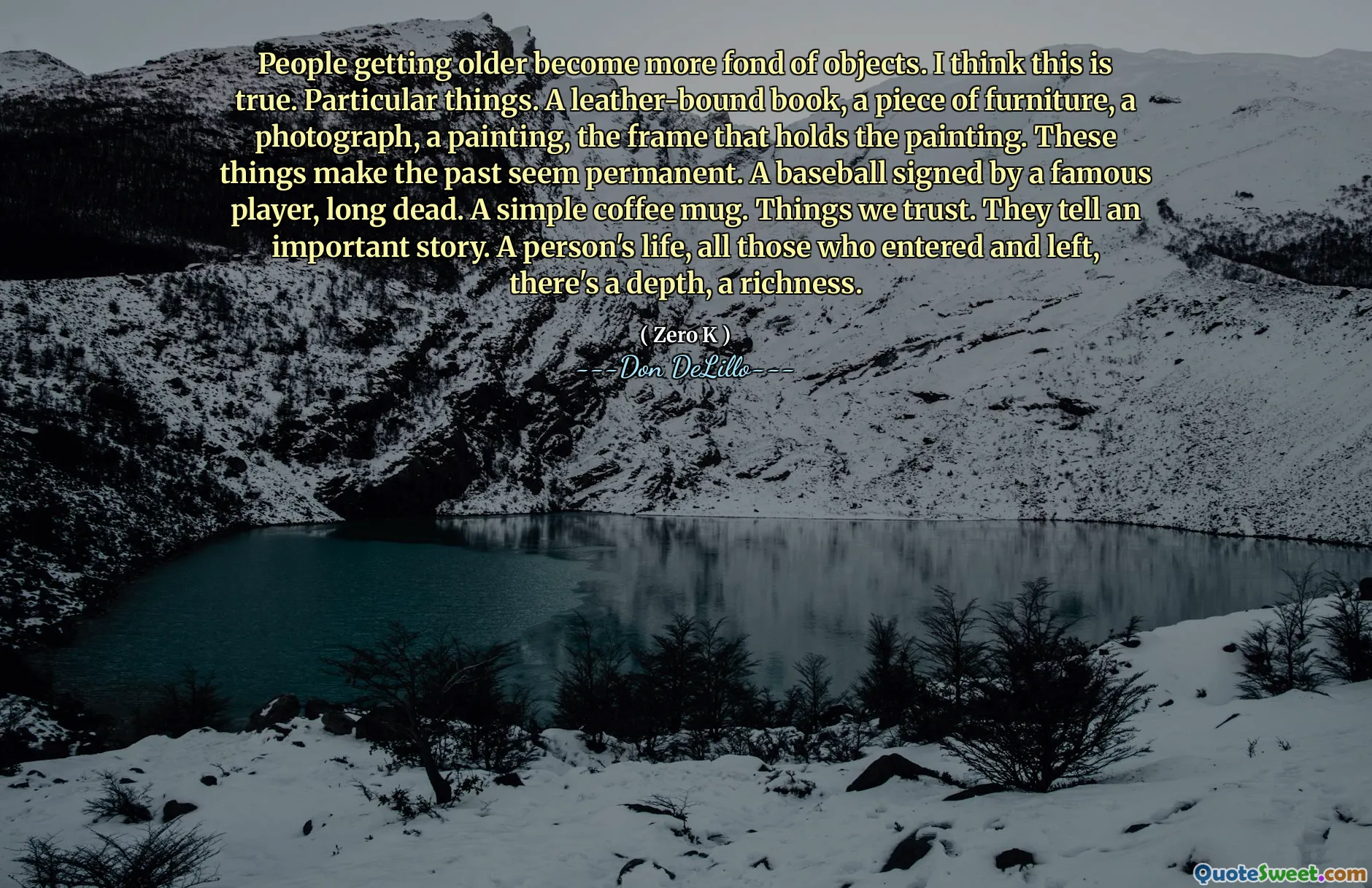
People getting older become more fond of objects. I think this is true. Particular things. A leather-bound book, a piece of furniture, a photograph, a painting, the frame that holds the painting. These things make the past seem permanent. A baseball signed by a famous player, long dead. A simple coffee mug. Things we trust. They tell an important story. A person's life, all those who entered and left, there's a depth, a richness.
As we age, our appreciation for physical objects deepens, revealing a profound yearning to connect with the past and preserve moments that define our personal histories. These tangible items act as anchors in the vast sea of memories, offering a sense of permanence amid the transient nature of life. A leather-bound book might symbolize knowledge accumulated over years or a cherished literary escape from reality. An aged piece of furniture can hold stories from generations gone by, each scratch and polish adding to its character. Photographs capture fleeting moments, freezing them in time, allowing us to relive emotions and connections that might otherwise fade. Artwork and its frames remind us of aesthetics, taste, and the stories that inspired their creation. Even small, seemingly inconsequential objects like a coffee mug or a signed baseball carry emotional weight—they are repositories of personal history, acts as tangible evidence of experiences, relationships, and passions. These objects foster a sense of trust, providing comfort and continuity. The stories they tell are not only about individual lives but also about cultural and historical epochs. They embody the depth of human experience, the passage of time, and the enduring nature of memory. In a way, these objects serve as a bridge, linking the ephemeral moments of our lives to something more substantial, more permanent, enriching our understanding of ourselves and our histories.






